Determine Whether the Given Value is From a Discrete or Continuous Data Set
1
Determine whether the given value is a statistic or a parameter.
A survey found that 30 % of all respondents go to school.
The value is a statistic because it is a numerical measurement describing some characteristic of a sample.
2
Determine whether the given value is a statistic or a parameter.
A sample of students is selected and it is found that 50 % own a computer.
Statistic because the value is a numerical measurement describing a characteristic of a sample.
3
A particular country has 45 total states. If the areas of 20 states are added and the sum is divided by 20, the result is 186 comma 979 square kilometers. Determine whether this result is a statistic or a parameter.
The result is a statistic because it describes some characteristic of a sample.
4
Determine whether the given value is from a discrete or continuous data set.
When a car is randomly selected, it is found to have an engine with 4 cylinders.
It is from a discrete data set because the number of possible values is finite or countable.
5
Determine whether the value given below is from a discrete or continuous data set.
When a car is randomly selected and weighed, it is found to weigh 1851.5 kg.
A continuous data set because there are infinitely many possible values and those values cannot be counted.
6
Determine whether the value is from a discrete or continuous data set.
Number of bacteria in a petri dish is 12,120
7
Determine which of the four levels of measurement (nominal, ordinal, interval, ratio) is most appropriate.
States in a region
8
Determine which of the four levels of measurement (nominal, ordinal, interval, ratio) is most appropriate.
Ranks of cars evaluated by a consumer's magazine
The ordinal level of measurement is most appropriate because the data can be ordered, but differences cannot be found or are meaningless.
9
Determine which of the four levels of measurement (nominal, ordinal, interval, ratio) is most appropriate.
Miles of road
The ratio level of measurement is most appropriate because the data can be ordered, differences can be found and are meaningful, and there is a natural starting zero point.
10
Determine which of the four levels of measurement (nominal, ordinal, interval, ratio) is most appropriate.
Bushels of wheat
The ratio level of measurement is most appropriate because the data can be ordered, differences (obtained by subtraction) can be found and are meaningful, and there is a natural starting zero point.
11
In a survey, the responses of respondents are identified as 10 for a "yes", 20 for a "no", 30 for a "maybe", and 40 for anything else. The average (mean) is calculated for 715 respondents and the result is 22.3.
Identify the level of measurement of the data.
Explain what is wrong with the given calculation.
The data are at the nominal level of measurement.
Such data are not counts or measures of anything, so it makes no sense to compute their average (mean).
12
In a set of data, blood lead levels are represented as 10 for low, 20 for medium, and 30 for high. The average (mean) of the 529 blood lead levels is 25.4.
Identify the level of measurement of the data.
Explain what is wrong with the given calculation.
The data are at the ordinal level of measurement.
Such data should not be used for calculations such as an average.
13
Which of the following is associated with a parameter?
A parameter is a numerical measurement describing some characteristic of a population. So, a parameter is associated with data that were obtained from an entire population.
14
Which of the following consists of discrete data?
The number of suitcases on a plane is a number representing a count. This would consist of discrete data.
15
Which level of measurement consists of categories only where data cannot be arranged in an ordering scheme?
The nominal level of measurement is characterized by data that consist of names, labels, or categories only. The data cannot be arranged in an ordering scheme (such as low to high).

Try Numerade free for 7 days
Try Numerade free for 7 days
Continue

Try Numerade free for 7 days
Try Numerade free for 7 days
Continue

Try Numerade free for 7 days
Try Numerade free for 7 days
Continue
Recommended textbooks for you
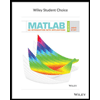
MATLAB: An Introduction with Applications
Publisher: John Wiley & Sons Inc
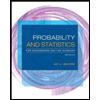
Probability and Statistics for Engineering and th...
Publisher: Cengage Learning
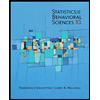
Statistics for The Behavioral Sciences (MindTap C...
Author: Frederick J Gravetter, Larry B. Wallnau
Publisher: Cengage Learning
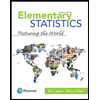
Elementary Statistics: Picturing the World (7th E...
Author: Ron Larson, Betsy Farber
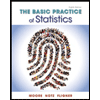
The Basic Practice of Statistics
Author: David S. Moore, William I. Notz, Michael A. Fligner
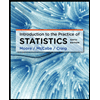
Introduction to the Practice of Statistics
Author: David S. Moore, George P. McCabe, Bruce A. Craig

MATLAB: An Introduction with Applications
ISBN: 9781119256830
Author: Amos Gilat
Publisher: John Wiley & Sons Inc

Probability and Statistics for Engineering and th...
ISBN: 9781305251809
Author: Jay L. Devore
Publisher: Cengage Learning

Statistics for The Behavioral Sciences (MindTap C...
ISBN: 9781305504912
Author: Frederick J Gravetter, Larry B. Wallnau
Publisher: Cengage Learning

Elementary Statistics: Picturing the World (7th E...
ISBN: 9780134683416
Author: Ron Larson, Betsy Farber
Publisher: PEARSON

The Basic Practice of Statistics
ISBN: 9781319042578
Author: David S. Moore, William I. Notz, Michael A. Fligner
Publisher: W. H. Freeman

Introduction to the Practice of Statistics
ISBN: 9781319013387
Author: David S. Moore, George P. McCabe, Bruce A. Craig
Publisher: W. H. Freeman
Source: https://paraquee.com/determine-whether-the-underlined-number-is-a-statistic-or-a-parameter-a-sample-of-seniors
0 Response to "Determine Whether the Given Value is From a Discrete or Continuous Data Set"
Post a Comment